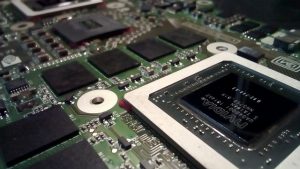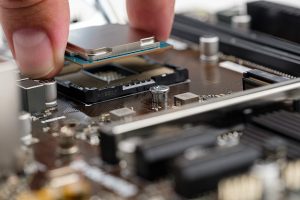Distinguishing Top-Rated RV Covers by Their UV Protection Features
Top-rated RV covers for sun damage are distinguished by the level of protection provided to RVs that are exposed to harmful UV rays for extended periods of time. Many assume that all RV covers are equal regardless of Class A, B or C classification. That is why it’s important for recreational vehicle owners to comprehend the kind of materials and technology used in the construction of the different types of covers.
That way, RV owners looking to buy a cover for their recreational vehicle or camper have a clear idea about the level of proper care and protection provided by each type. According to related studies, RVs have an average lifespan of between 10 to 30 years. The RV average life can also be linked to the average mileage run of around 200k to 300k if given the proper care and maintenance.
Understanding the Kind of UV Protection Provided by RV Covers for the Different Classes of RV
 A typical Class A RV is considered the largest and the most feature-rich type of recreational vehicle because it also serves as a regular motorhome. It has a mobile living space with warming and cooling capabilities that allow active use of the vehicle even in extremely warm outdoor conditions.
A typical Class A RV is considered the largest and the most feature-rich type of recreational vehicle because it also serves as a regular motorhome. It has a mobile living space with warming and cooling capabilities that allow active use of the vehicle even in extremely warm outdoor conditions.
A Class B RV is a smaller less powerful type of motorhome often used in geographical locations with moderate climate. It offers a laid back but less lavish style of mobile living lifestyle as its use is mainly for recreational purposes.
 This denotes that care and protection of Class B RVs call placing the vehicle in indoor storage; or by using a heavier kind of RV cover for stronger outdoor protection.
This denotes that care and protection of Class B RVs call placing the vehicle in indoor storage; or by using a heavier kind of RV cover for stronger outdoor protection.
Class C RVs on the other hand, share similar features with the Class A RVs, as their size and features are almost the same. It also means that Class C RVs are usually exposed to the harmful UV Rays and outdoor elements as they are in use and out on the road most of the time.
Types of RV Covers Recommended by CarCover.com
CarCover.com offers two types of RV covers built with protection and preservation features that meet the requirements of Class A, B or C RVs.
One is the five-layer Gold Shield cover and the other is the three-layer Silver Shield cover. The Gold Shield can provide the best care and protection for all Classes of RV as its 5-layer built can withstand the extreme heat of the UV rays during a vehicle’s extended outdoor exposure.
The 3-layer Silver Shield can provide sufficient outdoor protection for Class B RVs in use in geographical locations with modest climates. In the absence of extreme weather conditions, the Silver Shield can give ample protection to motorhomes stored under carports.
The difference in thickness is merely to provide a lower-price option especially for larger RVs used in locations with moderate climate while spending less time exposed to harmful outdoor elements, Nevertheless, CarCover.com makes certain that both Gold and Silver Shield covers offer comparable waterproofing protection including against the occurrence of water pooling at the top surface of the vehicle. Moreover, the firm uses a proprietary UV Sun Inhibitor Treatment to strengthen the protective ability of both Shields, by negating the polypropylene plastic’s sensitivity to the sun.

 A Reuters exclusive report disclosed that France’s Antitrust Regulator is about to file charges against computer chip maker Nvidia, for allegedly engaging in anti-competitive practices. Apparently, the charges are the results of a broader inquiry into the chip maker’s production of chips for both
A Reuters exclusive report disclosed that France’s Antitrust Regulator is about to file charges against computer chip maker Nvidia, for allegedly engaging in anti-competitive practices. Apparently, the charges are the results of a broader inquiry into the chip maker’s production of chips for both  A GPU by the way is an electronic circuit that has the ability to carry out high-speed mathematical calculations typically used to accelerate computing tasks like graphics rendering, video editing and machine learning (ML).
A GPU by the way is an electronic circuit that has the ability to carry out high-speed mathematical calculations typically used to accelerate computing tasks like graphics rendering, video editing and machine learning (ML). lready considered for operations in the US through a NASA study that delved into the potentials of SATS. The latter being the acronym of the Small Aircraft Transportation System, for which studies in the manufacture of electric air taxis have been conducted by the aerospace industry.
lready considered for operations in the US through a NASA study that delved into the potentials of SATS. The latter being the acronym of the Small Aircraft Transportation System, for which studies in the manufacture of electric air taxis have been conducted by the aerospace industry. oby plans to make electric air taxis available by 2025, to bring JFK Airport passengers to downtown Manhattan. The quiet, emissions-free eVTOL journey takes around seven minutes. Recharging of the electric air taxi takes about five minutes, while passenger unloading and boarding is taking place
oby plans to make electric air taxis available by 2025, to bring JFK Airport passengers to downtown Manhattan. The quiet, emissions-free eVTOL journey takes around seven minutes. Recharging of the electric air taxi takes about five minutes, while passenger unloading and boarding is taking place  While it seems unlikely for defence
While it seems unlikely for defence  The defence industry is in fact currently operating under controversial circumstances. Recent news about leakages of confidential US Pentagon information, have put the US Homeland Security Department in a tight spot.
The defence industry is in fact currently operating under controversial circumstances. Recent news about leakages of confidential US Pentagon information, have put the US Homeland Security Department in a tight spot.